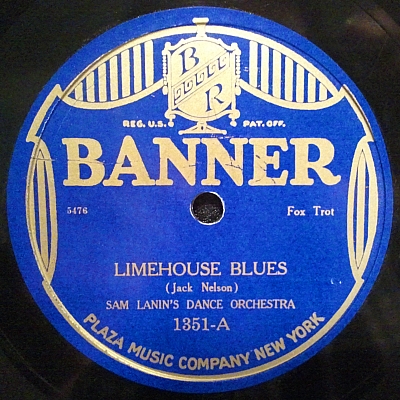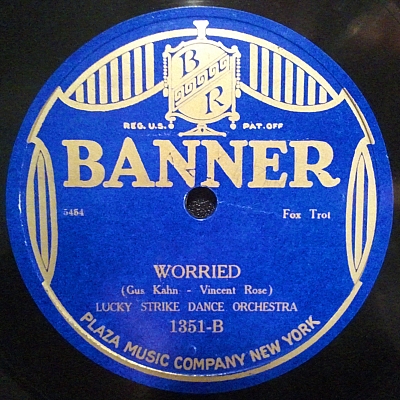

 |
 |
| Limehouse Blues | Worried |
| Sam Lanin's Dance Orchestra | Lucky Strike Dance Orchestra |
| Banner 1351-A | Banner 1351-B |
| Matrix# 5476-2, Take 2 | Matrix# 5454-1, Take 1 |
| April 1924 | March 1924 |
| New York, New York | New York, New York |
| The lead-out groove, though not connected to the main groove, has what sounds like a few notes from a piano here. |